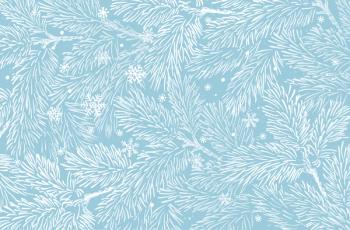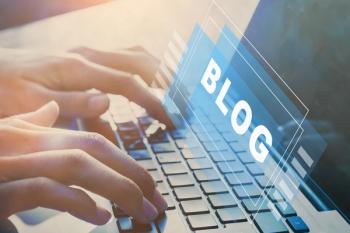
- August 2024
- Volume 39
- Issue 6
- Pages: 22–24
FT-IR Microscopy: Sampling by Transmission
In this tutorial, we examine the techniques for preparing samples for transmission analysis using single windows, compression cells, and, finally, epoxy “pucks” and microtomes.
Fourier transform infrared (FT-IR) microscopy is a workhorse tool for a wide spectrum of applications. Obtaining high-quality data requires some skill in sample preparation, data collection, and data analysis. In this tutorial, we examine the techniques for preparing samples for transmission analysis using single windows, compression cells, and, finally, epoxy “pucks” and microtomes. The key factors for success will be emphasized.
There are three primary approaches when using Fourier transform infrared (FT-IR) microscopy: transmission, reflection, and attenuated total reflectance (ATR). Reflection and ATR reduce the incident beam intensity by picking off a portion of the IR beam, while transmission ensures the full IR beam passes to the sample (we will not discuss the design of FT-IR microscopes here), resulting in higher throughput. However, the sample thickness is a major concern for transmission, making sample preparation critical for success.
The Beer-Lambert Law states the absorption, Aλ, at a given IR wavelength (λ) of a sample is Aλ= αλLC, where αλ is the absorptivity (how much light is absorbed by a given amount of the sample at wavelength λ), L is the sample thickness or path length, and C is the concentration of the sample. If Aλ is too high, the spectral peak becomes “totally absorbing” (Aλ>1.2 abs). At this point, the instrumental response (detectors, electronics) becomes non-linear, meaning the signal of the system no longer scales directly to the sample properties. The spectrum exhibits excessive noise, and the tops of peaks flatten. Extreme absorption can obscure peak locations (resulting in poor search results), overwhelm nearby peaks (causing missed components), and provide erroneous peak heights (losing quantitative information), making the data suspect or useless. The only parameter the user can control to prevent total absorption is the sample thickness.
The ideal transmission sample will be very thin, approximately 10–50 µm. This generally results in the sample being fragile. It must be mounted on a substrate for analysis. The substrate must be transparent in the analytical region, or it will obscure information. For instance, glass is useful only when operating in the near-IR (NIR) range; most glass strongly absorbs below 2000 cm-1. The preferred mid-IR substrates are disks of KBr, BaF2, NaCl (“salt windows”), ZnSe, or diamond. Other materials are used in specific applications (like silicon), but these are the most common choices. KBr and NaCl are inexpensive, but soft and water-soluble, so care must be taken in cleaning and handling. A clean salt window is excellent, both in cost and performance. Diamond will be discussed below. Finger oils must be avoided because of strong absorptions at 1750 cm-1 (esters) and 3000 cm-1 (hydrocarbons), so appropriate gloves are strongly recommended.
Many samples can be isolated from their matrix using needle probes (acupuncture needles are great) or tweezers. Fibers and particulates are commonly acquired in this manner. Scrapings collected with a razor knife or microplane are common, but they may be thick. This is useful for surface coatings on hard substrates or for bulk polymer materials. Biological samples exhibit unique challenges beyond our scope here.
Thin samples of sheet material (laminates) can be prepared using two glass slides, as seen in Figure 1. The film is placed between the two slides. Pressing down firmly, the film is sliced flush with the surface of the top slide using a razor; normal razor knives will work, but surgical blades are sharper. While maintaining pressure, the top slide is rotated slightly or shifted down, exposing a tiny sliver of the film. This sliver is cut off with the razor using the edge of the slide as a guide. The simple window or compression cell mounting is good with these slivers.
An essential consideration in transmission sampling entails background acquisition. An open hole can be used, but correction for the properties (reduced transmission) of the substrate is improved by using a clean spot on the substrate slightly shifted away from the sample. Including the substrate in background acquisition will provide the best background.
Simple (Single) Windows
Many samples can be placed directly on a salt window with no cover. This works well for materials extracted from bulk samples, like particulates or the slivers as discussed above. If needed, the sample can be flattened with a roller wheel (found on the knives in sample prep kits). Flattening must be done carefully; excessive pressure can damage the sample or the soft salt plate. Also, adhesion may lift the sample. Alternatively, you can use a second window to flatten the sample. If it adheres, just use the second window instead. Once in place, care must be taken to not lose the sample during handling, since air currents may be enough to cause the sample to fly off. Adhesives are not advised because they will appear in the IR beam during the transmission analysis. We recently examined particulates extracted from plastic sheets. The particulates, extracted with an acupuncture needle, were found to be erucamide, a slip-aid used to prevent the adhesion of the film to the processing rollers.
Compression Cells
The compression cell is one of the most useful tools for IR transmission microscopy. The cell provides two main advantages: first, the sample is protected between two windows making loss or damage far less likely. Second, the compression between the windows thins the sample for better transmission performance. This thinning can be beneficial by broadening layers, enabling otherwise difficult visualization. Normal salt windows (such as KBr) are good, and they provide reasonable compression but are soft so may suffer from cracking if excess pressure is applied. The best option is the diamond compression cell. The diamond windows enable a much higher compression. Diamond compression cells differ from diamond anvil cells; compression cells generate moderate pressure to thin the sample; and anvil cells can generate kilobar (103 bar) or megabar (106 bar) pressures designed to alter the properties of the sample. Although the diamond absorption bands may obscure some signals approximately 2000 cm-1 for most samples, the diamond bands ratio out effectively when proper backgrounds are collected.
Figure 2 shows a Pick-Pen device (ST Japan) used to lift and place a fiber on the lower diamond (you can see the fiber positioned). Before the upper diamond is put in place, a small amount of KBr powder (a single crystal is enough) is placed next to (but not on) the fiber. This will help avoid interference pattern fringing in the background (unwanted sine wave data due to internal reflections). Then, the upper diamond is brought into contact with the sample. Most cells have some way to avoid rotation of the diamonds during compression which could “smear out” the sample, ruining the desired spatial information. Pressure is applied by some mechanism flattening both the sample and the KBr crystal. The background is collected through the KBr.
Epoxy Mounting and Microtomes
Epoxy pucks are time consuming to prepare, but will provide high-quality samples that are stable indefinitely. While recipes differ, the following is a general guideline. This process is complex, but it will yield excellent results with practice.
First, a small, funnel-like mold is prepared by coating it with a release agent (see Figure 3). Then, the sample is gently placed at the bottom of the narrow section, on its edge if possible (this “bottom” will become the top when completed). The epoxy is then mixed (5:1 resin to hardener is typical), and then gently stirred to prevent excessive bubbles. The epoxy is poured slowly into the mold until the narrow section is filled at least two-thirds of the way (covering the film). A full cure usually takes 24 h.
The small puck is then removed from the mold, which may require cutting open the small end of the mold. The sample should be seen suspended in the epoxy. The end of the puck is polished, progressing from the rough to the fine grit, to expose the sample.
To prepare the thin section for transmission, the puck is clamped into a microtome and slowly brought into contact with the blade, which should remove slices between 5 and 10 µm in thickness. The films will slide onto the blade from which they can be lifted with a needle probe. One or more slices showing evidence of the film are selected, positioned on a KBr window or in the compression cell, and finally examined under the microscope. The film spectra should display minimal traces of epoxy. Figure 3 shows each step in this process; the author thanks Robert Heintz and Stephan Woods for their assistance in preparing these samples and for edits to this manuscript.
Conclusion
Proper sample preparation for transmission is crucial due to concerns over thickness. We have outlined the most common methods here. We will examine ATR and reflection samples as well as data collection and analysis in upcoming articles.
Michael S. Bradley serves on Spectroscopy’s Editorial Advisory Board and is a former Product Manager with Thermo Fisher Scientific in Madison, Wisconsin. Direct correspondence to:
Articles in this issue
over 1 year ago
Revolutionizing Dairy Safety: The Role of FT-IR Spectroscopyover 1 year ago
Vol 39 No 6 Spectroscopy August 2024 Europe PDFNewsletter
Get essential updates on the latest spectroscopy technologies, regulatory standards, and best practices—subscribe today to Spectroscopy.




